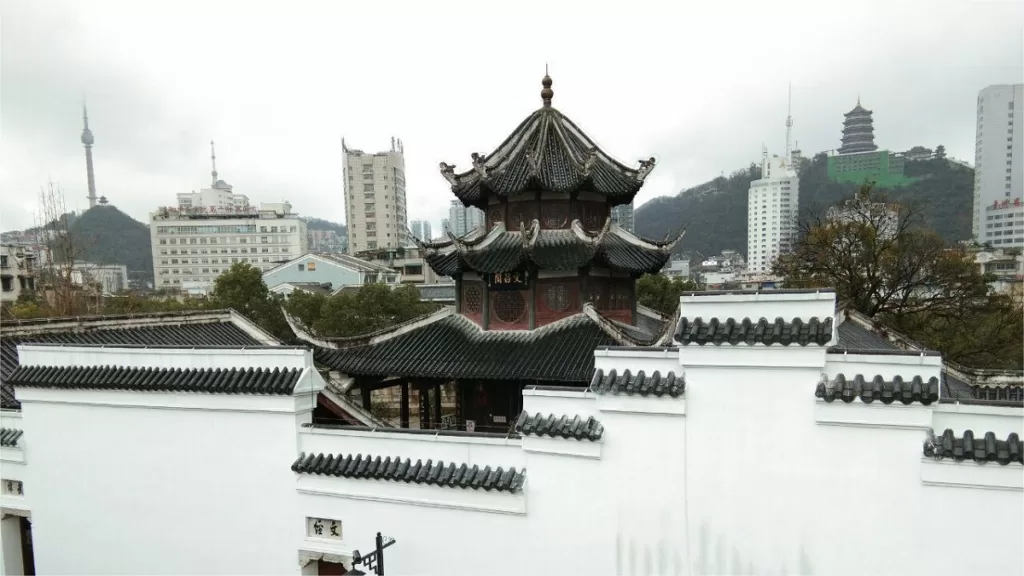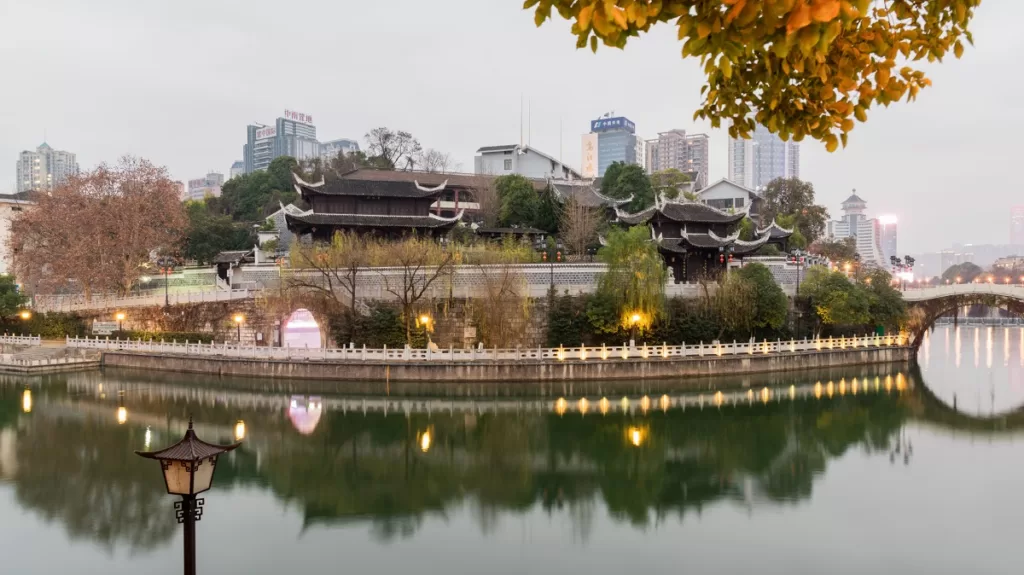Pavillon Wenchang, Guiyang - Situation et points forts


Wenchang Pavilion (文昌阁) stands proudly on the site of the old East Gate in the heart of Guiyang, China. This three-story pagoda-style structure, constructed in 1609, originally served as a place of worship for the Daoist deity Wenchang Di Jun, the God of Literature. Perched on elevated terrain, ascending the pavilion offers panoramic views of mountains, rivers, and the cityscape, providing visitors with a vast and captivating perspective – truly a splendid vantage point for appreciating Guiyang’s natural beauty.
Localisation et transport
Wenchang Pavilion is nestled in the heart of Guiyang city, specifically situated at Wenchang North Road in Yunyan District, Guizhou Province. Pour vous y rendre, vous pouvez choisir l'un des moyens suivants :
Bus : Take bus 4, 5, 6, 21, 22, 25, 32, 40, 42, 45, 54, 69, 86, 202, or 253 and get off at Zhongshan East Road Stop (中山东路站).
Métro : The closest metro station to Wenchang Pavilion is Provincial People’s Hospital (省人民医院) on line 2. After getting out of the station from Exit A, walk about 500 meters to the west to reach the attraction.
Highlights of Wenchang Pavilion
What sets Wenchang Pavilion apart is its unique architectural design, featuring nine corners. In a country where most traditional pavilions have even-numbered corners, Wenchang Pavilion in Guiyang, with its odd-numbered corners, stands out as an architectural rarity. Alongside the famous Jiaxiu Tower, Wenchang Pavilion has earned its place among the distinguished ancient buildings in Guiyang.
Located on the spacious and grand East Gate Moon City, the pavilion boasts an austere yet majestic architectural style. Flanking the pavilion on both sides are auxiliary halls, and in the front lies a connecting wing with dormitories, forming a courtyard layout reminiscent of a traditional Chinese quadrangle. The second and third floors of the pavilion feature nine wooden columns each, with the roof displaying nine corners, supported by 54 pillars and 81 beams—each a multiple of nine. In ancient symbolism, the number “9” often represented high power and status, providing a glimpse into the meticulous craftsmanship of the designers.
Though Wenchang Pavilion no longer serves its original purpose as a Daoist shrine and has been repurposed into a local teahouse, the classic and distinctive architectural beauty it embodies continues to captivate history and architecture enthusiasts. Visitors are invited to explore this timeless marvel, appreciating not only the stunning views it offers but also the rich historical and cultural significance embedded in its design.
Vlog sur le pavillon de Wenchang
Attractions près de Wenchang Pavilion

Parc de la zone humide de Huaguoyuan

Hebin Park (Riverside Park)

Ancien site de l'école Dade

Place Zhucheng

Grand théâtre de Guiyang

Pavillon Jiaxiu

Jardin de Cuiwei

Musée des nationalités du Guizhou

Temple de Yangming, Guiyang
Guiyang Attractions, Sites historiques du Guizhou